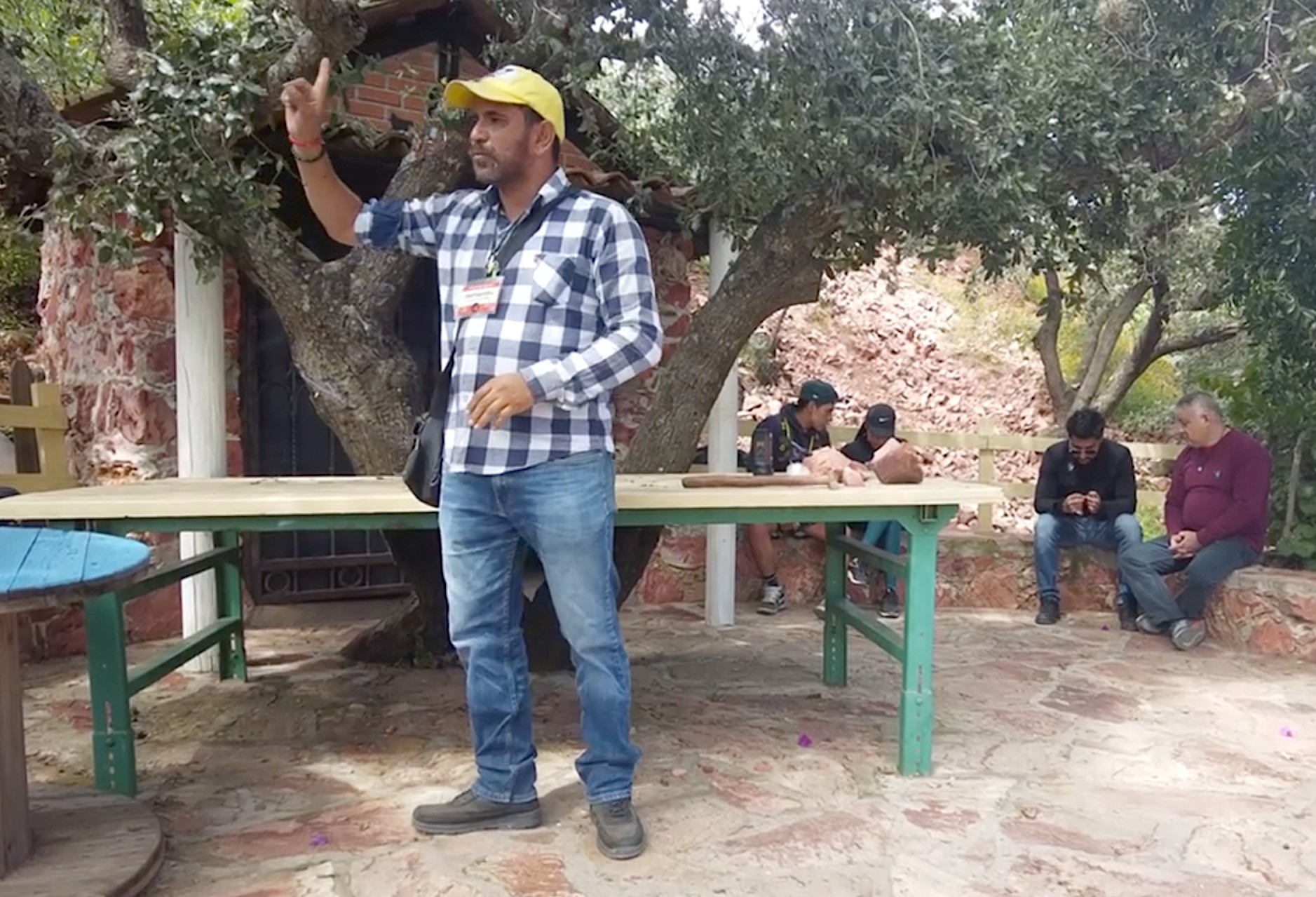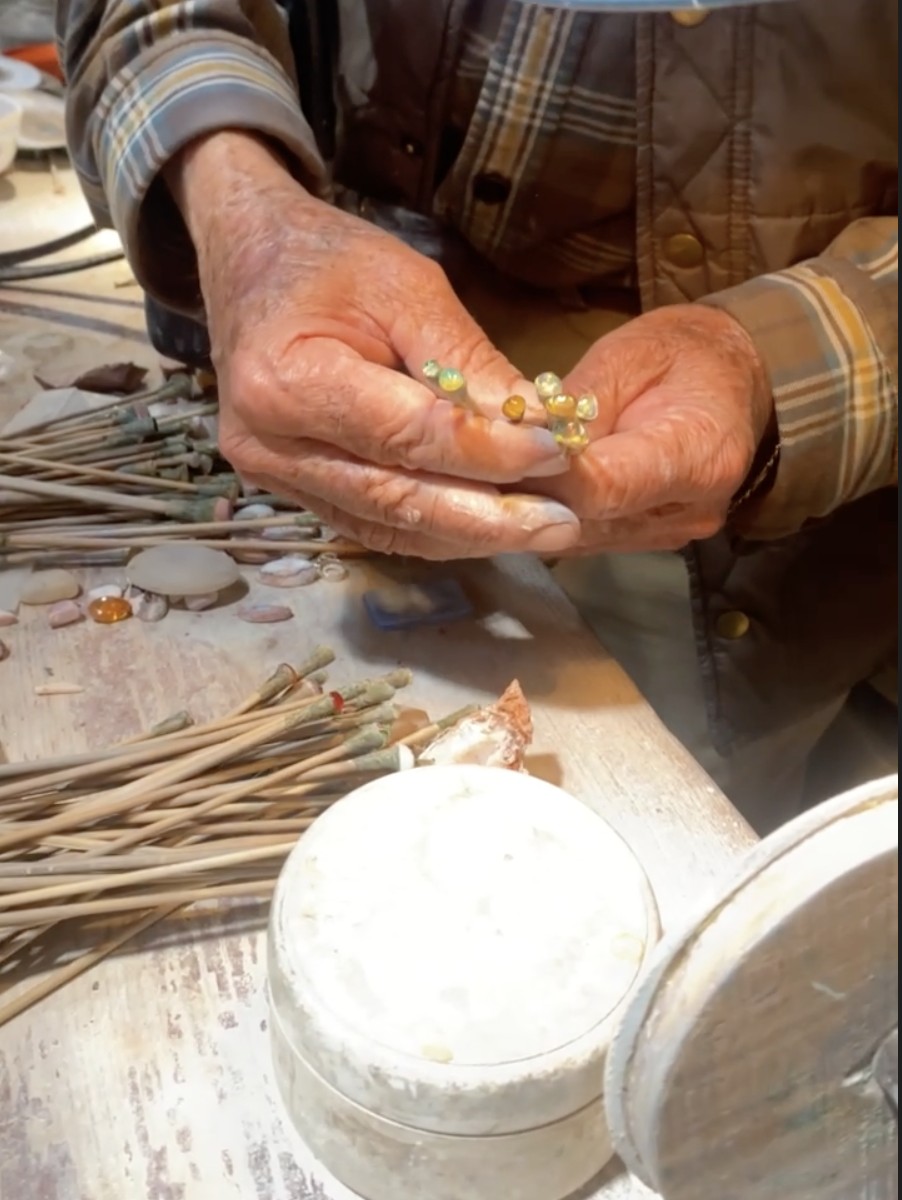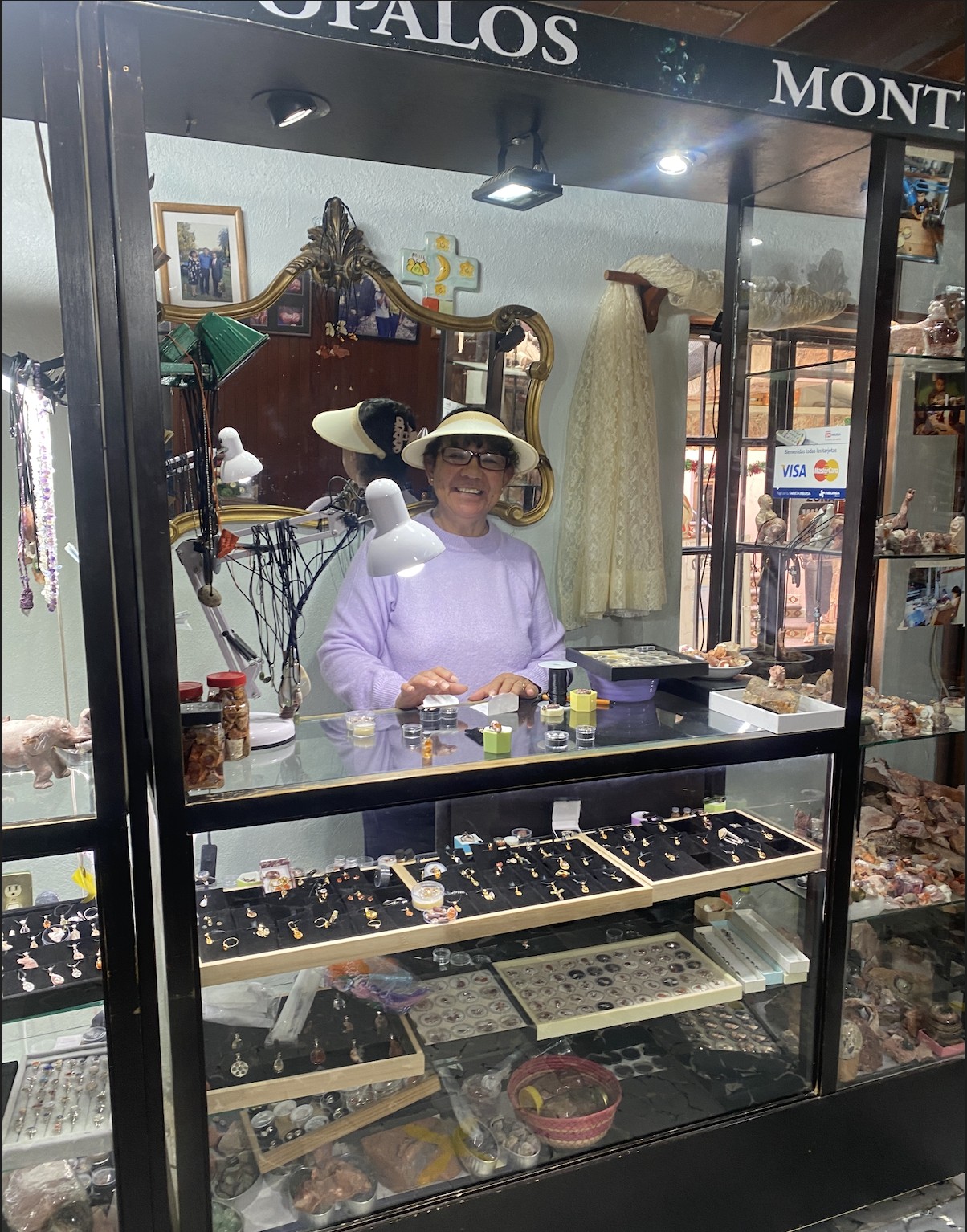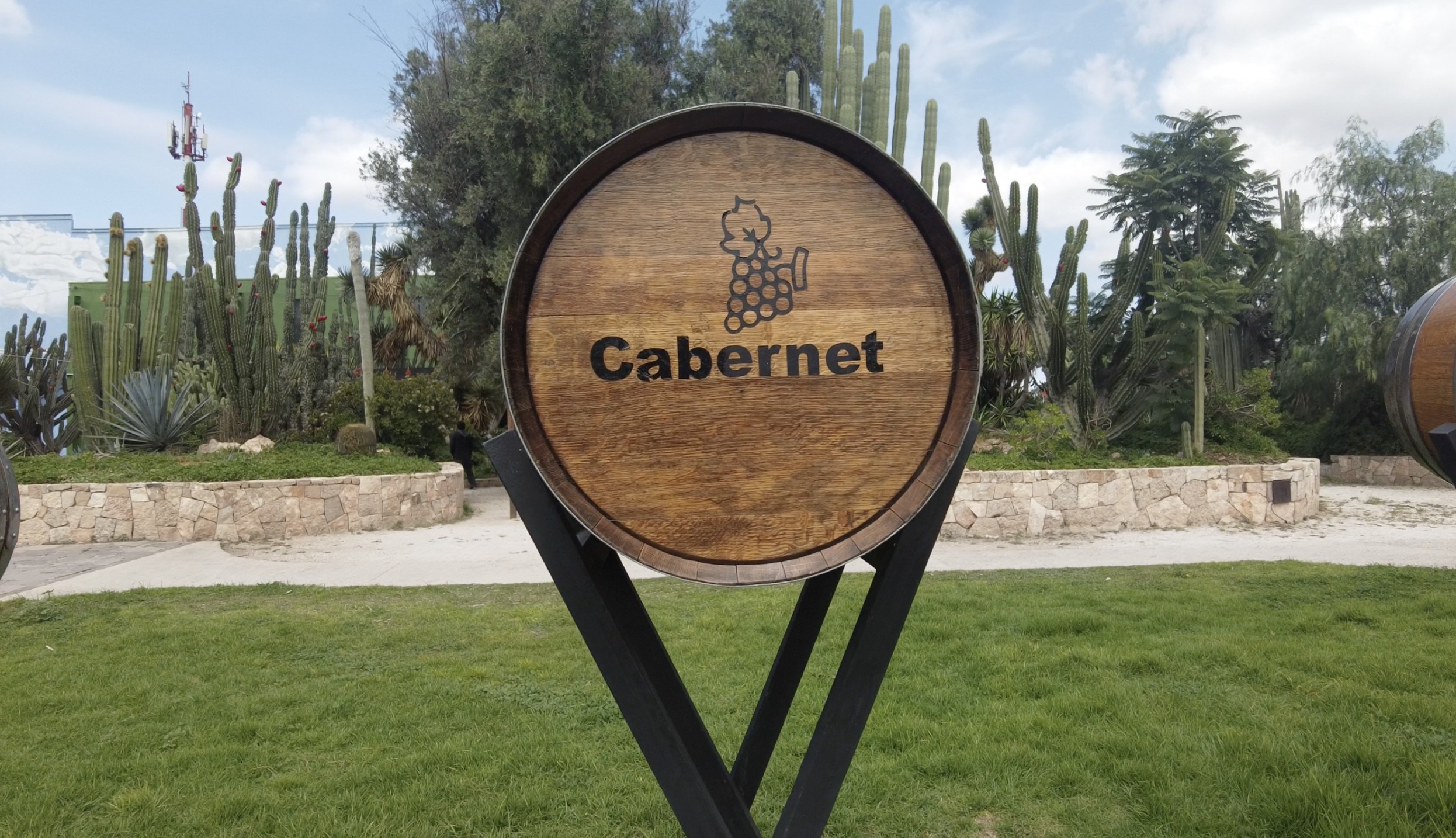Twelve of us, nine humans and three small pups, chugged up the mountainside to Mina El Redentor (Redeemer Mine) in the back of a 4×4 all-terrain vehicle with double traction. The rocky, cumbersome path from the village of La Trinidad up to the mine took about 20 minutes to conquer and put my gimbal camera to the test. We barely kept ourselves tethered to the truck bed as we were jostled and tossed, holding tight to our belongings. Ascending nearly a kilometer into the sky, the breathtaking panorama of the mountainside unfolded before us. We were all in awe. I hoped my camera was managing to capture the beauty and truly reflect what we were seeing.
La Trinidad, a small settlement of approximately 1836 residents, is located a few kilometers west of the town of Tequisquiapan in the state of Querétaro, Mexico. This modest community is renowned for its opal mining industry that intricately weaves itself into the fabric of local life. This town is not just known for its opals; it also has a history steeped in gold mining. The La Trinidad gold mine was once one of Mexico’s highest-grade operations; however, the focus has shifted towards the opal mines, which continue to thrive. El Redentor symbolizes both the challenges and opportunities present in this evolving industry.
The opal mines are more than just a source of gemstones; they’re the lifeblood of La Trinidad’s economy and culture. Generations of families have passed down mining knowledge and skills, creating a rich tapestry of tradition and expertise. The industry’s impact extends beyond the mines, supporting local businesses and shaping the community’s identity.

Fernando’s enthusiasm was evident as he demonstrated the beauty of opals. “A red opal resembles the color of blood, but when you move it, it reveals a spectrum of colors. It’s a challenging piece to find—very rare and highly valuable. We refer to it as fire opal,” he explained, showcasing these exquisite gems. Fire opals are celebrated for their vibrant hues, ranging from fiery reds to warm oranges and yellows, and are primarily sourced from regions like Querétaro, where they are formed in volcanic rock. Their rarity and striking appearance make them sought after in the gemstone market, embodying both natural beauty and cultural significance. After Fernando’s introductory presentation, we were taken inside the mine, where we learned about the gemological composition of opals and how they glow after being exposed to UV light.
The life of an opal miner in La Trinidad is one of early mornings and persistent hope. Miners often start their day before sunrise, crucial for maximizing productivity and avoiding the midday heat. As dawn breaks, miners gather their tools—hammers, chisels, and protective gear—before heading out to the mines. As Fernando notes, “The miners go up and down on foot, they climb to almost one kilometer high.”

Fernando’s father, Hector Montes has held the government concession (called Concepción Minera) for opal mining for nearly four decades, continuing a family legacy that spans 130 years. Hector’s expertise shines in his lapidary work, where he’s been polishing opals for an impressive 66 years.
I found Hector teaching a small opal workshop, where he captures the miner’s spirit perfectly: “In the afternoon you come back hungry, cold, and wet because you got caught in the rain, but waiting for dawn you come back and try again. The next day you arrive you see that it was worth it,” he explained to an attentive group, referring to the unpredictability of mining.
The mine’s gallery showcases a stunning array of Hector’s handiwork: intricately carved stones, elegant jewelry, and delicate miniature statues. Prominently displayed on the top shelf are the prestigious 100 Imperdíbles Mexico awards, recognizing the gallery as one of the country’s must-visit attractions.

Overseeing this treasure trove is Hector’s wife, Rufina Ugalde. With a warm smile that rivals the beauty of the opals, she manages the gallery and handles the sales of her husband’s masterpieces. “This is where I belong,” Rufina explains, “greeting visitors and giving the final polish to our opals. I love demonstrating the transformation from rough stone to finished gem.” As she speaks, Rufina carefully selects a few exquisite pieces from their collection. Her eyes sparkling with pride, she adds, “These stones become wearable art, each piece crafted individually by hand.”
“Opal mining remains our primary source of income,” Rufina candidly explains. “However, the gems are becoming increasingly scarce, forcing us to explore alternative revenue streams. Working with opals has its challenges, but it’s also incredibly rewarding.”
Mina El Redentor has successfully adapted to the inherent unpredictability of opal mining by diversifying its income through tourism. Acknowledging that mining can yield inconsistent results, the Montes family has embraced tourism as a vital supplement. They offer immersive tours that invite visitors to engage in the mining experience directly.
Guests are given tools and guidance, then sent out into the sea of red, vein-rich stone to try their hand at mining, keeping any opals they find. In addition, Fernando conducts his tours “quiz-style” with precious, polished opals as the prizes. This innovative approach not only provides a steady income stream but also educates tourists about La Trinidad’s mining heritage.
Opal miners in La Trinidad often participate in local festivals that celebrate their heritage. One notable event is the Opal Festival, where miners showcase their finds and artisans display handcrafted jewelry. This festival not only highlights the beauty of opals but also fosters a sense of community pride and unity among miners and their families.
Opals are a pretty big draw for Tequisquiapan, but believe it or not, there’s much more. The community’s rich history also includes archaeological sites dating back to 750-900 CE, highlighting the area’s historical significance. This quaint area is rich in history, culture, and natural beauty, making it an intriguing destination for travelers seeking to experience authentic Mexican life.
Tequisquiapan is characterized by cobblestone streets lined with traditional colonial-style houses, wrought iron fixtures, and colorful facades. The town’s historic center is a testament to its 300-year heritage, primarily influenced by indigenous culture and Spanish colonization. Visitors can admire the Parroquia de Santa María de la Asunción, an iconic church known for its impressive bell tower, which serves as a focal point in the town’s main square.
One of the town’s highlights is La Pila Park, a large recreational area featuring a serene lake surrounded by walking trails. This park is perfect for picnics, leisurely strolls, or simply enjoying the natural beauty of the region. The local springs that feed into the park add to its charm, making it a popular spot for families and visitors alike.
Tequisquiapan is also part of Querétaro’s Ruta de Vino (Wine Route), which showcases the region’s burgeoning wine production. The annual Fería Nacional del Queso y el Vino (National Cheese and Wine Fair) attracts thousands of visitors each year, celebrating local cheese and wine artisans. This event allows attendees to sample delicious local products while enjoying live music and cultural performances.

Located along the route is Viñedos La Redonda (Vineyards La Redonda), where you can begin with a tour of the vineyards that includes two wine tastings. Their restaurant, Trattoría Orlandi, features a menu filled with organic ingredients sourced from their own gardens, along with recommended wine pairings. Guests can purchase their wine, explore a stunning cactus garden, and discover numerous Instagram-worthy spots throughout the grounds. It’s an ideal setting for celebrating special occasions, so be ready to be amazed.
Another must-see stop is just off the main highway of the wine route: Finca Vai (Vai Farms). This artisanal, sprawling facility produces more cheese than any other in Querétaro and features a shop, tasting rooms, a garden restaurant, a brewery, and an animal farm that guests can tour. Discover how Finca Vai crafts cheese from beginning to end, while sampling their diverse range of varieties. At the restaurant, you’ll find the best pizza in Mexico (what else would you expect from a cheese farm?), and can sample local wines and craft beers against the backdrop of their impressive gardens.
Throughout the year, Tequisquiapan comes alive with events like the Rally de Tequisquiapan, which winds through the scenic highways of Querétaro. This rally not only showcases local talent but also draws motorsport enthusiasts from across the region.
The town’s cultural identity is further enriched by its commitment to preserving traditions. Residents often engage in storytelling and celebrate local legends, ensuring that their heritage remains alive for future generations.
La Trinidad, Tequisquiapan, is more than just a destination; it’s a vibrant community that embodies the essence of Mexican culture and history. From the depths of opal mines to the charm of its colonial streets, La Trinidad and Tequisquiapan offer an unforgettable experience that captures the essence of Querétaro’s cultural and natural beauty.
Related articles on MexConnect
- The magic of Bernal, Queretaro: wine, opals and historic charm
- Making merry in May: Mexico’s National Cheese and Wine Festival
- Sampling fine wines on the Querétaro Wine Trail
- Tequisquiapan, Queretaro: A delightful spa town

